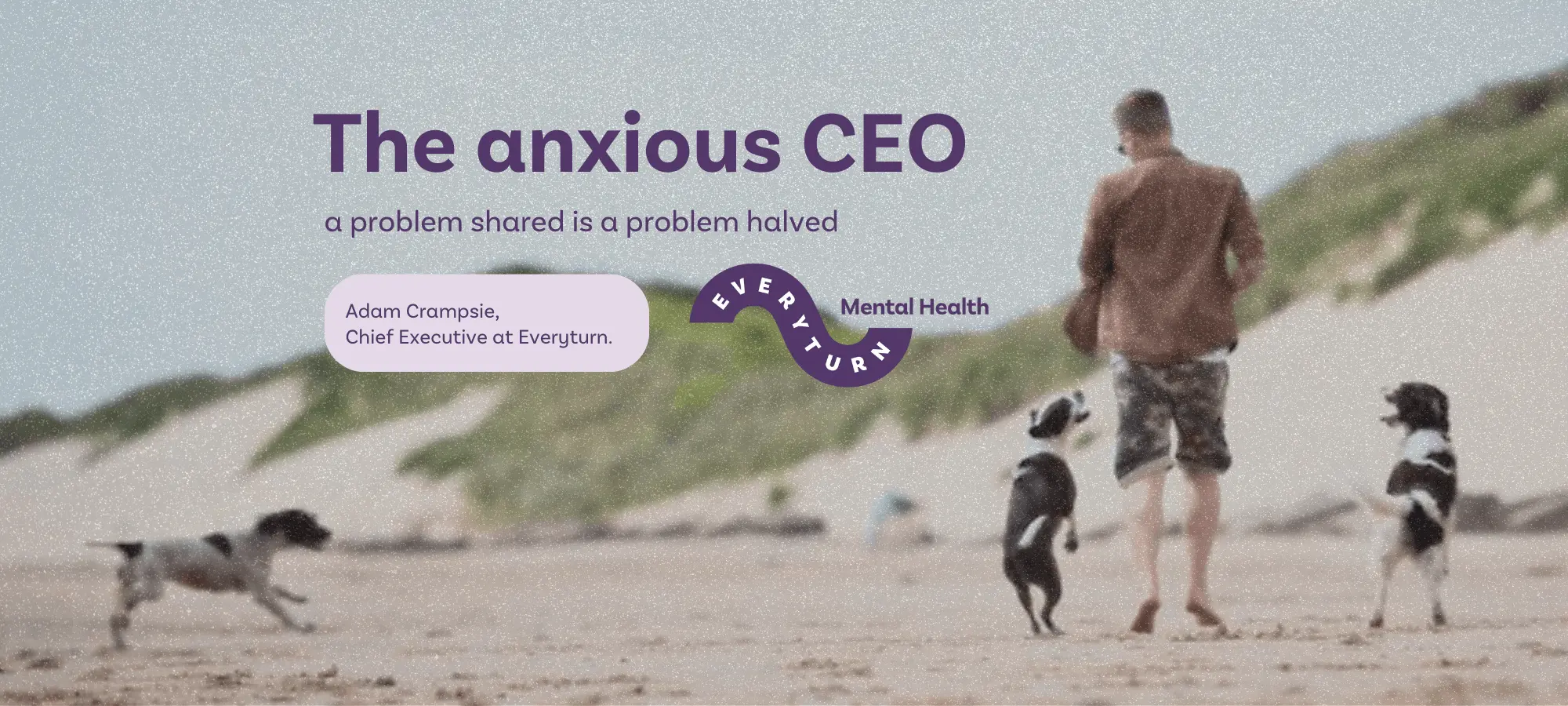
Leading a company, especially as a CEO, is a huge privilege. It does, however, come with its fair share of challenges and responsibilities. While CEOs are often perceived as confident and composed individuals at the helm of their organisations (at least that’s what I tell myself!), the reality is that many of them face the silent battle of anxiety.
 Even though anxiety is frequently thought of as a bad emotion, it plays a vital role in our lives. It can be a useful mechanism that gets us ready for potential dangers and spurs us on to do what has to be done. On the other hand, excessive and uncontrollable anxiety can be harmful to our health and ability to perform.
Even though anxiety is frequently thought of as a bad emotion, it plays a vital role in our lives. It can be a useful mechanism that gets us ready for potential dangers and spurs us on to do what has to be done. On the other hand, excessive and uncontrollable anxiety can be harmful to our health and ability to perform.
“We are no longer prey to tigers and mastodons, but to damage to our self-esteem, ostracism by our group, or the threat of losing out in the competitive struggle,” psychologist Rollo May wrote in 1977.
Despite the fact that some of us now only have to deal with boardroom mastodons (we’ve all been there!), the sense of anxiety has remained largely unaltered from the days when it was common to live in constant terror of tiger attacks. In other words, even when predators are no longer after us, fear over our health, our loved ones, whether we will lose our jobs, or even just “what if I fail?” is still after us.
But as leaders, do we talk openly about these feelings? I know I don’t.
Recently, a significant and unexpected problem that might have had a major impact on our organisation surfaced. We had no plan in place. I agonised over the possibilities for days while frantically trying to come up with a solution. I had trouble sleeping, stopped interacting with people, got very irritated, and felt awful.
Was my leadership as a CEO evident in the lack of a plan for this problem? Would my career end as a result of this failure? Have I disappointed people?
At three in the morning, when I should have been sleeping, these were the only things that were going through my head. The fear was dominating. Anxiety was no longer a useful emotion; it was taking over.
Of course, people noticed. I wasn’t my usual chirpy self, spreading positivity and joie de vivre with every step (yes, even I raised an eyebrow at that one). But I just snapped “I’m fine”. Except I wasn’t fine, I was struggling.
Anyhow, I was raised with the mantra “a problem shared is a problem halved,” so I pulled the people I trusted the most into a room and told them the issue and how I had been feeling. Within a couple of days, as a collective, we had sorted out the problem and even turned it into an opportunity. This is what comes from the power of sharing, talking about how you are feeling, and taking collective action.
I felt like a weight had been lifted off my shoulders. I could have quite easily given in to the fear and anxiety I was feeling. On reflection, I should have spoken about how I was feeling sooner.
So as leaders, what can we do to get the right balance and not let our workplace anxieties take over?
1. Promoting open dialogue:
Encouraging a culture of open dialogue is vital to addressing anxiety in leadership. Leaders should create a supportive environment where team members feel comfortable discussing their mental health concerns without fear of stigma. By leading by example and sharing personal experiences, leaders can help break the silence surrounding mental health.
2. Providing mental health support:
Organisations should prioritise mental health support for their leaders. Implementing employee assistance programmes (EAPs) or mental health services that offer confidential therapy, coaching, and resources can provide leaders with an outlet to seek help and develop coping mechanisms. Regular mental health check-ins can also help identify early signs of anxiety and ensure timely support.
3. Promoting work-life balance:
Leaders often face immense pressure to balance professional and personal responsibilities. Encouraging work-life balance and setting realistic expectations can alleviate the burden and reduce anxiety levels. Establishing clear boundaries, encouraging holidays, and discouraging excessive work hours can contribute to a healthier work environment.
4. Leadership development and training:
Incorporating mental health awareness and stress management training into leadership development programmes is essential. By equipping current and aspiring leaders with the necessary tools to manage their own anxiety and support their teams, organisations can foster a more resilient and empathetic leadership culture.

So here I am, sitting in the woods with my dogs on my morning walk, talking and being open and honest about my workplace anxieties. They exist; they will never go away, but I won’t let them take over.
Remember, a problem shared is a problem halved.